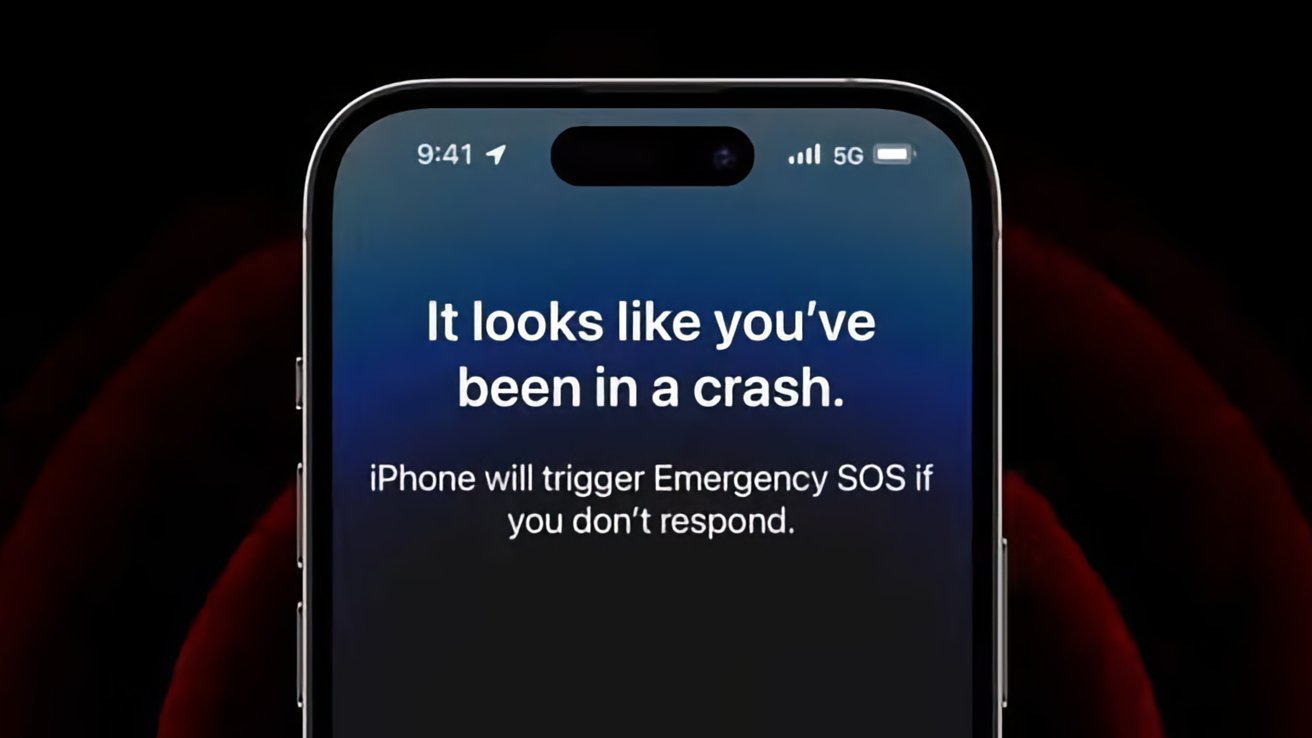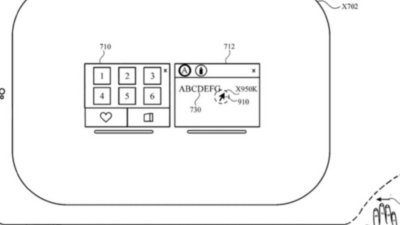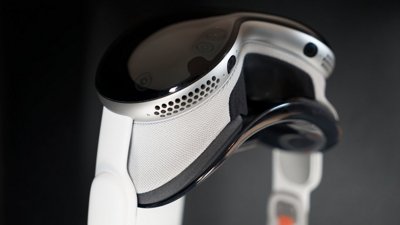A combination of Crash Detection and Emergency SOS via satellite on an iPhone 14 guided rescuers to a driver who had gone off a cliff in California and was bleeding from the head.
Crash Detection does keep sending false alarms to emergency services, such as when iPhone 14 owners are at a party, but it's also saved lives.
Now CBS News reports that a man driving on Mt. Wilson Road in California was saved by a combination of Crash Detection and Apple's Emergency SOS via Satellite. According to CBS News, the man's car went over a cliff and dropped 400 feet before crashing to a halt.
"He was 400 feet down in a canyon with virtually no way out," Steve Goldsworthy, the Rescue Operations Leader of Montrose Search and Rescue, said. "So, who knows when, or if, we would've located him."
"The location that we got from the iPhone activation was spot on," continued Goldsworthy. "It was basically his phone on its own, calling for help on his behalf."
"I believe that if we didn't have that good location information in a timely manner, he probably would've bled out," added Mike Leum, one of the members of Montrose Search and Rescue said. "I kept telling him how lucky he was."
How the man was saved
It's clear that the Crash Detection feature on his iPhone 14 registered the accident and attempted to contact emergency services. However, reportedly there was no cell reception so it's claimed that the iPhone automatically used Emergency SOS via Satellite.
That feature does put accident victims in contact with rescuers, but it cannot be done automatically. It requires the user to be outdoors, so not within a car, and to aim the iPhone in the direction of the satellite.
The iPhone guides the user to that position, but it is down to the user moving the phone, it can't do it by itself.
Apple's support documentation says that even when a user's regular cell network isn't available, "you may still be able to make the call." That's using other networks in the area, and it's only when that proves impossible that the iPhone will prompt the user to try Emergency Text via Satellite.
Whether the driver managed to use the satellite feature, or a different cell network, the result was that rescuers were alerted to his precise location immediately. Without his iPhone 14, rescuers say it could have been days before they even learned of the crash at the remote location.
Apple introduced Crash Detection with the iPhone 14 range in September 2022, and by October of that year, it was already alerting emergency services to the scene of car crashes far faster than before.
 William Gallagher
William Gallagher

-m.jpg)






 William Gallagher and Mike Wuerthele
William Gallagher and Mike Wuerthele
 Andrew Orr
Andrew Orr
 Malcolm Owen
Malcolm Owen
 Amber Neely
Amber Neely

 Wesley Hilliard
Wesley Hilliard











4 Comments
It's turtles all the way down. He had a device that automatically called for help. He had a car that keep him alive during a 400 foot fall down a canyon. The car's capability to do that was made possible through government regulations. Uh, I guess he jumped the guard rail? Rescue services had a helicopter capable of getting to him before his injuries could kill him. That helicopter is a product of millions of man-hours of engineers, manufacturing, and servicing to keep it working. It's an incredible testament to civilization that we are willing to expend such resources to save one life.
Still need to wait another 2 years for our phone upgrades to satellite SOS - and probably satellite texting when we do - from our current iPhone 12 models. Low data rate satellite Internet might even be possible in 5 to 10 years, from your phones!
And what they didn’t tell you is Apple Maps directed him to drive off the cliff……I kid…I kid….but Apple Maps this weekend did have me drive on a dirt road that just dead ended. I had to drive backwards about 1000ft. The couple that eventually drove up behind me (and I waved them to drive backwards) said that maps guided them that way as well.
Oh, wait, I thought this was another article about Elon Musk.
I can see the movie adaptation now:
Car goes off the cliff, bounces all the way down, finally comes to a stop.
Phone says "Looks like you've had a crash". [cue audience laughter]
Camera switches to a close-up of the phone displaying the message.
Camera pans back to show the driver, in shock, looking dumbly at the phone, unable to comprehend.
Camera switches to external shot of car, which now spontaneously explodes.
Bonus points if they make the car a fully electric vehicle but have it explode anyway.